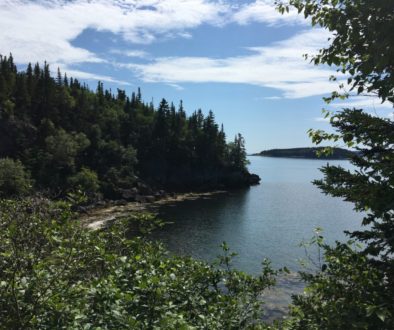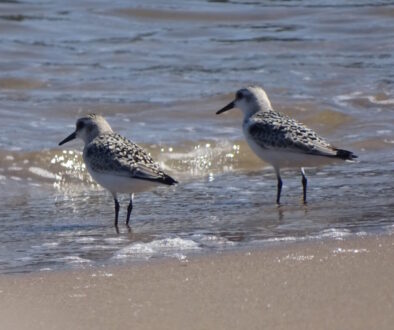National Parks bring a wealth of values to New Brunswickers – habitat and wildlife conservation, protection of water quality, outdoor recreation, and the jobs and other economic benefits associated with research, park operations and tourism. For over thirty years, ecologists and park users have been trying to figure out how to expand the conservation value of Fundy National Park. The Park’s boundaries are not large enough to allow park managers to conserve populations of wide-ranging mammals, watersheds and other wildlife (such as the now endangered population of Inner Bay of Fundy Atlantic salmon). The “State of the Parks Report” (1997) notes that Fundy National Park has experienced the second highest number of wildlife extirpations (the loss of a species from a region) of all national parks, behind only tiny Point Pelee in southern Ontario. With the predicted impacts of climate change on ecosystems, we need to conserve the ability of Fundy natural areas to respond and bounce back from additional stresses in temperature, drought, floods and storms.
Park staff should be praised for bringing this question to the attention of a wider audience, and for speaking with provincial government departments to explore options for management of Crown land next to the park. The next step is clearly to involve the public in a broader discussion of how we solve these conservation challenges and address concerns about ongoing recreational use and other commercial activities.
Expanding the park’s boundaries would have real benefits. More habitats and watersheds would be well protected from development under the Canada National Parks Act. Federal parks have access to significant management resources, increasing the likelihood that conservation plans will be acted upon.
Another conservation tool available now is a provincial protected natural area designation. This legislation was established in 2003, and there are already three small Protected Natural Areas in the region west of Fundy NP – McManus Hill, Point Wolfe River Gorge and Little Salmon River Gorge. These three areas by themselves are adding only minimally to the ecological integrity of the Park. A more sizeable protected natural area abutting Fundy National Park, managed in coordination with the national park management plan, would greatly enhance the Park’s ability to protect the waters, woods and wildlife of the Fundy region. With a protected natural area designation, hunting and trapping would be permitted, while industrial activities would be prohibited.
The Canadian Parks and Wilderness Society – New Brunswick Chapter (CPAWS NB) believes that the Fundy National Park needs to be expanded, one way or another. The concerns about the continued persistence of the wildlife, rivers and forests of Fundy National Park are real, and must not be dismissed because some people can’t imagine a good compromise or are unwilling to explore options. The provincial government has announced they plan to expand the protected natural areas system on Crown land. CPAWS believes we have an opportunity to find a compromise and increase land and water protection in the Crown lands surrounding Fundy National Park. We have an obligation to future generations, and ourselves as citizens, to resolve a question that has hung around unanswered for far too long.
Roberta Clowater is the Executive Director of the Canadian Parks and Wilderness Society, New Brunswick Chapter, based in Fredericton.


